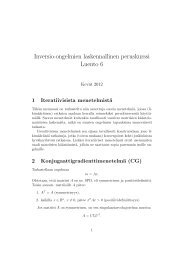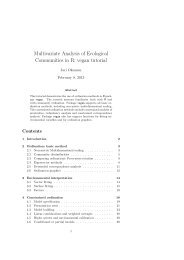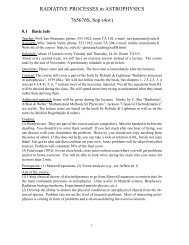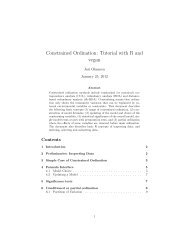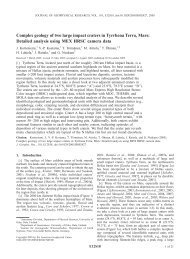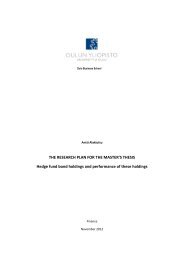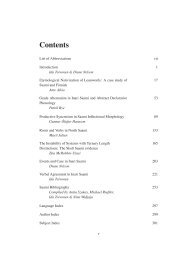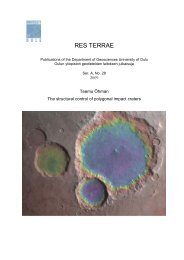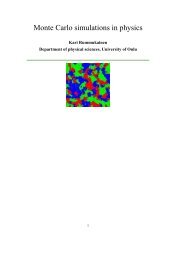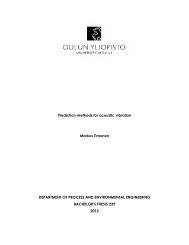Juha Köykkä - Oulu
Juha Köykkä - Oulu
Juha Köykkä - Oulu
- TAGS
- juha
- oulu
- cc.oulu.fi
Create successful ePaper yourself
Turn your PDF publications into a flip-book with our unique Google optimized e-Paper software.
Res Terrae, Ser. A 32, J. <strong>Köykkä</strong>, Sedimentology of the Mesoproterozoic Telemark basin-fills, South Norway: implications for<br />
sedimentation processes, depositional environments and tectonic evolution<br />
the late Paleoprotorezoic and early Mesoproterozoic, Fennoscandia was part of the Co-<br />
lumbia/Nuna supercontinent, and later part of the Laurentia (Fig. 1).<br />
Gothian Orogeny can be described as a ca. 200–250 Ma period of subduction of<br />
oceanic crust along the southwestern margin of the Fennoscandia during the 1.66–1.5<br />
Ga (e.g., Brewer et al., 1998; Andersen, 2005; Åhäll and Connelly, 2008). The orogeny<br />
evolution was charachaterized by near-continuous oceanward-stepping crustal growth,<br />
relative to the active trench, and an average continental growth for major stages of<br />
continental magmatism is estimated at ca. 1.6 km/Ma (Åhäll and Connelly, 2008). It is<br />
assumed that southwestern part of the Fennoscandia may have formed during the Go-<br />
thian Orogeny, when fragments of magmatics arcs with limited geochemical character<br />
have been accreted onto Fennoscandia in distinct event in the period between ca. 1.66<br />
to 1.5 Ga. (e.g., Brewer et al., 1998; Åhäll et al., 2000). This period of accretionary<br />
orogeny was terminated by merging of a continental fragment, making up present-day<br />
southern Norway. The subduction event was followed by a period of anorogenic crus-<br />
tal extension magmatism and sedimentation starting at the 1.51–1.50 Ga (Bingen et al.,<br />
2005).<br />
The western margin of the EEC was affected by the Sveconorwegian Orogeny at<br />
the end of the Mesoproterozoic (ca. 1.14–0.90 Ga), which suggest that Baltica collide<br />
with another major plate. Bingen (2005) subdivided the Sveconorwegian Orogeny to<br />
four major phases: (i) 1.14–1.05 Ga accretion and local early collision; (ii) 1.05–0.98<br />
Ga continent-continent (Baltica-Amazonia collision); (iii) 0.98–0.96 Ga final conver-<br />
gence; (iv) 0.96–0.90 Ga post-collisional relaxation. Models involving oblique conti-<br />
nent-continent collision with significant strike-slip motion between a coherent Baltica-<br />
Laurentia margin and possible Amazonia (e.g., Bingen, 2005, 2008a, 2008b). Prior to<br />
the major collisional stage, the Sveconorwegian Orogeny shortly followed upon an<br />
event of continental magmatism and basin formation in the Telemark, Kongsberg, and<br />
Bamble blocks, suggesting extensional or transtensional tectonic regime at the onset of<br />
the Sveconorwegian Orogeny.<br />
Collision between then Laurentia and possible Amazonia resulted that the Rodinia<br />
supercontinent was formed by the agglunation of the existing cratonic fragments. Ro-<br />
dinia supercontinent -related collisional tectonic affected the southwestern EEC. Pas-<br />
sive continental margins heralding incipient break-up began to form along it northeas-<br />
22



